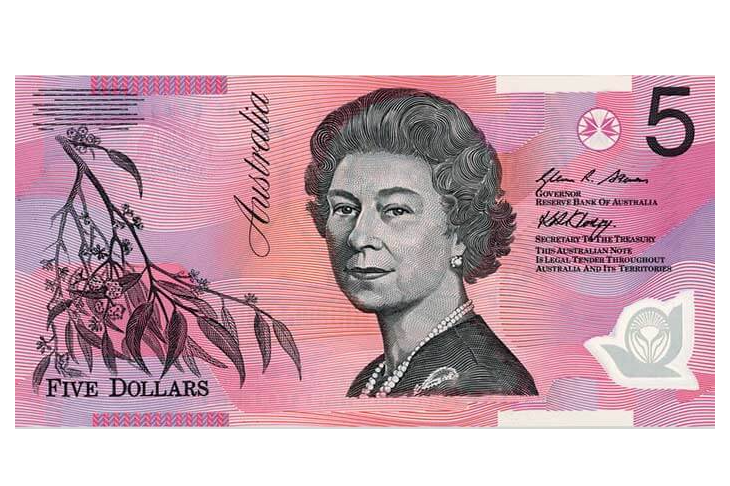Traditionally, the reigning monarch has appeared on the lowest denomination of Australia’s banknotes. It is a practice that harks back to the pound notes of pre-decimal days. It was even maintained by the Reserve Bank when the one-dollar note was replaced by a gold coin in the 1980s, and the Queen took the colonial philanthropist Caroline Chisholm’s place on the $5 note.
This was controversial at the time, but only briefly. Before long, the Queen’s place on the $5 note was fully accepted. This remained so until her death in September.
Today, however, our central bank showed its tin political ear with its announcement that the image of the late Queen, Elizabeth II, will not be replaced on Australia’s $5 note by our new King, Charles III.
Instead, it announced ‘The Reserve Bank has decided to update the $5 banknote to feature a new design that honours the culture and history of the First Australians… The bank will consult with First Australians in designing the $5 banknote.’
Presumably, the bank’s board believes it is following the fashionable trend in Australia to show ostentatious respect for our original inhabitants. The bank nevertheless stressed that the ‘update’ will take years and will involve extensive consultation before the replacement note is designed and printed. If experience is any guide, anything that involves consulting with Aboriginal communities may not reach a consensus at all, and so the late Queen may end up on Australia’s currency in perpetuity.
That hasn’t stopped Australia’s republicans and Aboriginal activists from celebrating the bank’s announcement as a big win for their agendas. If the bank’s governor and board members felt they were being apolitical, they are extremely naïve.
Craig Foster, the head of the Australian Republican Movement, hailed the change as an ‘important symbolic step’, adding, ‘To think that an unelected king should be on our currency in place of First Nations leaders and elders and eminent Australians is no longer justifiable.’
An outspoken Australian senator and Aboriginal woman, Lidia Thorpe – who last week screamed ‘this is war!’ at a protest against Australia day – claimed victory for her cause, calling it ‘a massive win for the grassroots, First Nations people who have been fighting to decolonise this country.’ As for Australia’s Labor government, which after the election last May established a minister to promote an Australian republic, it insisted this was the Reserve Bank’s decision, despite the government making its preferences clear soon after the Queen’s death.
Australia’s Treasurer and a prominent republican, Jim Chalmers, expressed quiet satisfaction in welcoming the change. ‘This is the right decision for the right reasons… to ensure that the new $5 note recognises and celebrates the culture and history and heritage of Indigenous Australians,’ he said today.
‘This is a simpler, nearer-term change which says we’ve got an opportunity here to recognise the monarch on our coins [and] recognise First Australians on the $5 note and I think that strikes a good balance.’
But Chalmers well knows, just like Foster and Thorpe, that a prelude to ditching the monarchy is to diminish its quotidian presence in Australians’ lives. The King may still jangle in Australians’ pockets, but now he will not be found in our wallets.
Indeed,with Australia, like Britain and the United States, increasingly becoming a cashless society, even coins are becoming relics of the past.
Yet the Reserve Bank’s political blundering could have been avoided with a simple, elegant, solution. It could have decided to revive Australia’s long-defunct $1 note.
The 1966 note that was retired in 1984 had a stylish, elegant, Aboriginal design, featuring artwork inspired by a then well-known but now forgotten Aboriginal artist, David Malangi. On one side, it featured a head-and-shoulders portrait of the Queen, alongside a stylised Australian coat-of-arms with its supporting kangaroo and emu drawn in a traditional Aboriginal manner. On the other side was a similarly stylised Aboriginal scene derived from a Malangi bark painting.

The design of that banknote was bold, simple, and stylish. It spoke of Australia’s past, present, and future.
By removing the King from the $5 note, the Reserve Bank board just couldn’t see this win-win opportunity and, tin-eared, decided to create needless division instead.






Comments